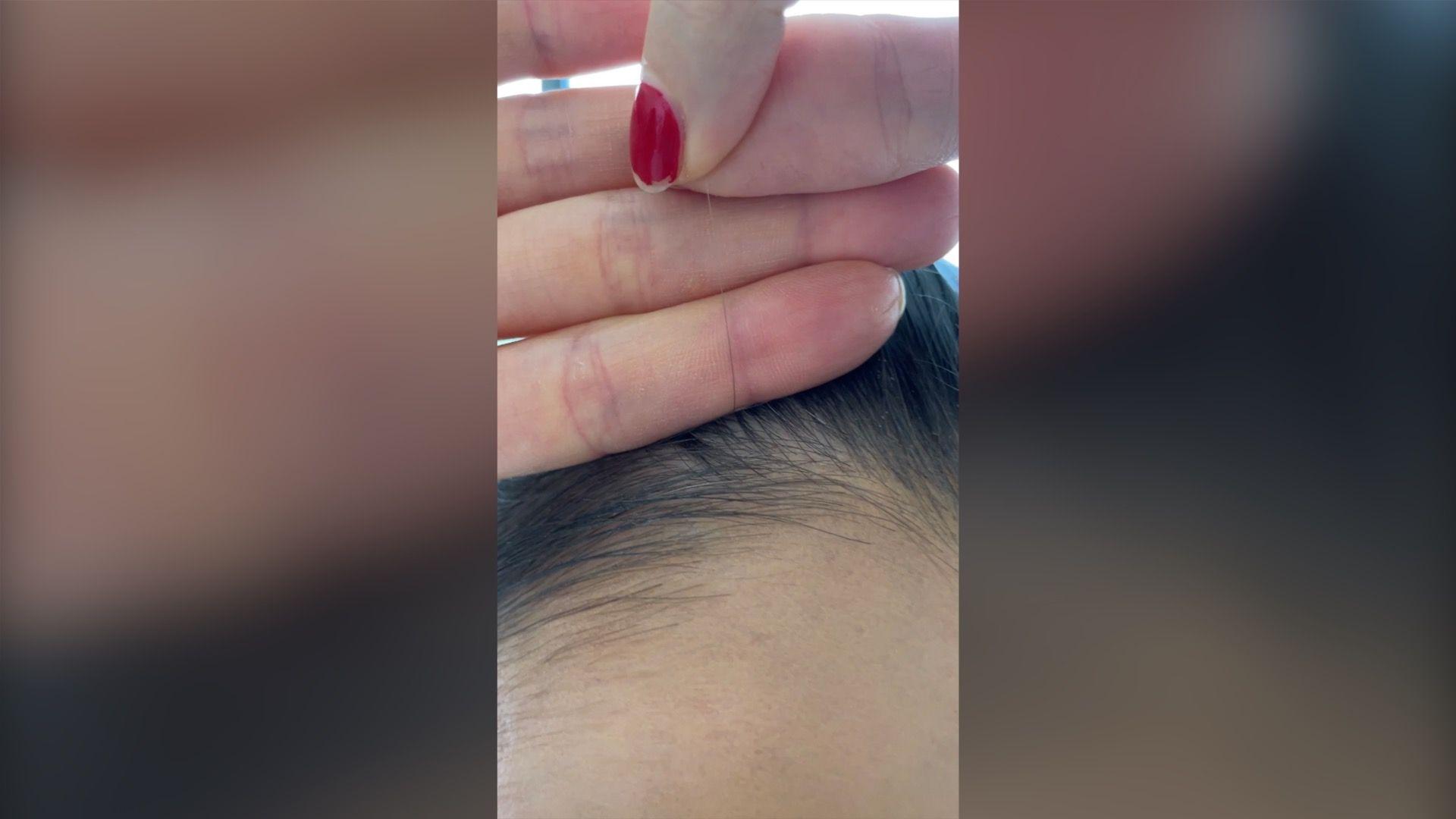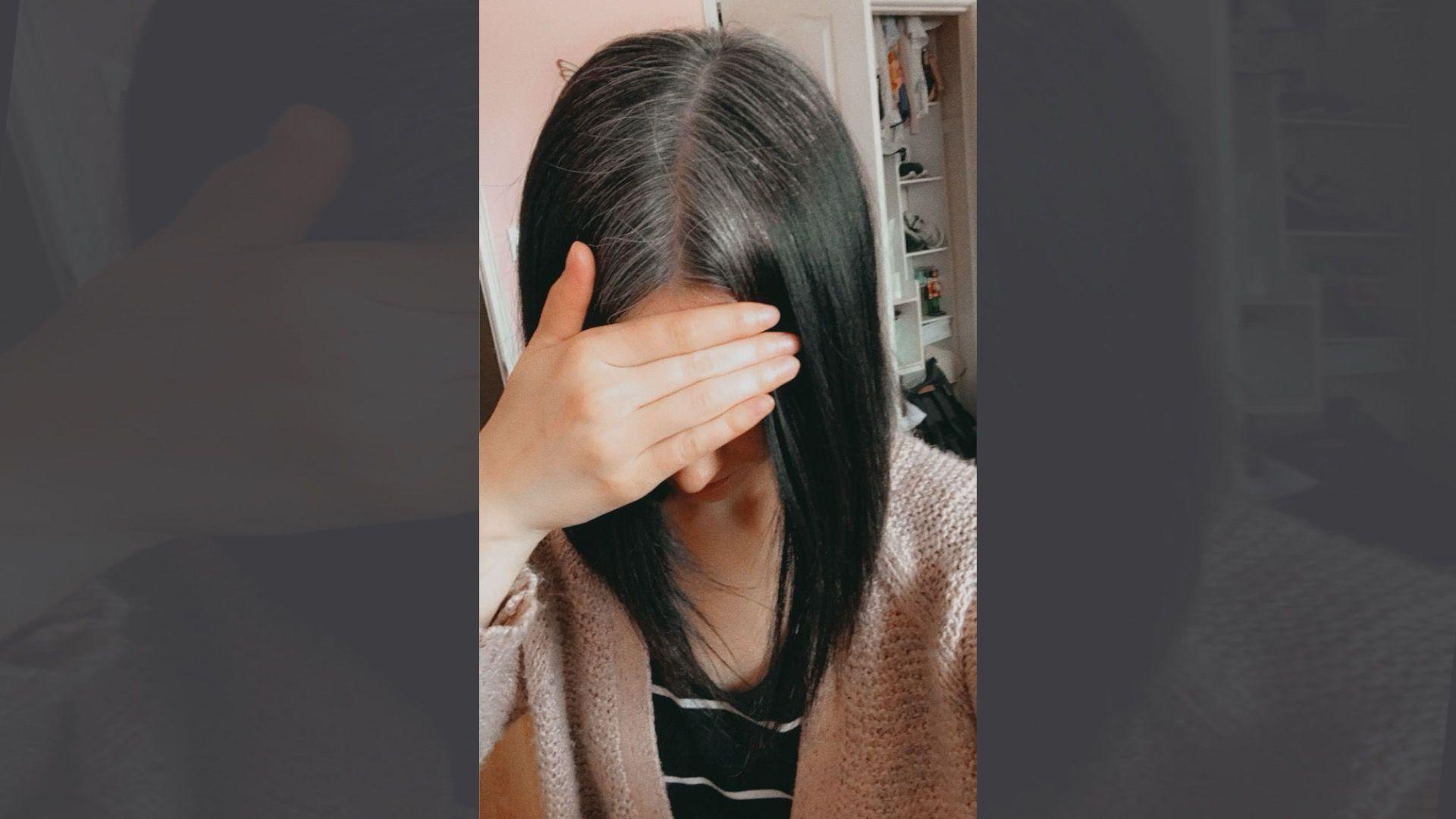Ashley Sukru was only 14 years old when a high school friend saw her first gray hair. That moment would change his perception of his physical appearance for many years.
“I immediately thought, ‘No, I can’t have gray hair, I’m only 14,’” she says.
“I remember coming home at lunchtime, checking my hair and noticing more and more gray hair; I was so embarrassed.”
Ashley, now 28 and originally from Canada, begged her parents to let her dye her hair.
“When you try to fit in with everyone, having gray hair is not something that helps you. I tried to hide it,” he explains.
Are people going gray prematurely?
Experts say that genetics is the most important factor that determines when you get gray; The evidence suggested that this was the case for Ashley.
His mother also went gray at age 14 and his grandmother was around 17.
Doctors say they are seeing a growing number of young patients worried about going gray prematurely, most in their 20s and 30s.
In people with a healthy lifestyle, graying of hair in Caucasian people occurs at the age of 35. In Asian and African people, it is known to occur 10 years later.
Any graying observed before this age is considered premature, that is, before the age of 20 in Caucasian people, 25 in Asian people and 30 in African people.
These thresholds have been set because the way genes work to pigment hair follicles differs in some breeds, and some lose the process later.
“This way, we know when to look for other causes and when it is expected to appear as part of normal aging,” says Sermed Mezher, a general practitioner in the United Kingdom.
Why does hair turn white?
New hair grows in hair follicles in the skin, where pigment-producing cells called melanocytes also reside.
Melanocytes produce two types of pigment: eumelanin, which determines the dark color of hair, and pheomelanin, which determines reddish or yellow tones. These pigments also influence the color of the skin and eyes.
A study on the cellular aging process, conducted by a team at New York University (NYU), found that as hair ages and goes through repeated cycles of loss and growth, an increasing number of melanocyte stem cells begin to function more slowly.
These stem cells stop moving within the hair follicle and remain fixed in one position, which prevents them from fully maturing and becoming functional melanocytes.
By not producing pigment, the hair turns gray, white or silver.
Can nutritional deficiencies cause premature graying?
American and Brazilian scientists have discovered that stem cells that control skin and hair color are damaged after intense stress.
But experts also say that premature graying could be a sign of nutritional imbalances and deficiencies that need to be addressed.
Deficiencies in vitamin D and B12, copper, iron, zinc, and low folate levels have been linked to premature graying.
Among these, low levels of vitamin B12 are considered one of the most common factors.
Vitamin B12, also known as cobalamin, plays a vital role in the production of healthy red blood cells that carry oxygen throughout the body, including the hair follicles.
Well-oxygenated follicles are essential to maintain pigment production.
“Vitamin B12 comes mainly from animal products, so if a person is completely vegan and does not take supplements, they would be the main culprit on my list,” says Mezher.
On the other hand, copper is important because it activates tyrosinase, an enzyme that helps produce melanin.
Foods such as seafood, sesame seeds, dark leafy green vegetables, and beef and lamb liver are good sources.
However, experts warn that an excess of certain minerals such as zinc and vitamin C can interfere with copper absorption, which could contribute to a deficiency.
In recent years, people have been taking zinc supplements to support immune health, especially during the Covid-19 pandemic, says Maria Marlowe, a nutritionist and author who started going gray in her 20s.
“If they’re not formulated well, you could be depleting your copper at the same time,” he explains. “If you want to take a zinc supplement, it is always advisable to take zinc and copper, combining them.”
Consuming too much iron and even too much vitamin C can reduce copper levels, he adds.

Doctors point out that when caused by mineral deficiencies, premature graying will be accompanied by other symptoms.
“With substances like copper, you may notice excessive weight gain, hair loss, and skin rashes. You may also experience extreme tiredness and fatigue, and even cold intolerance,” explains Mezher.
After undergoing tests, Marlow detected deficiencies in copper, iron and iodine.
She also tested for heavy metals, which she said could trigger premature graying by disrupting mineral absorption. It was found to have elevated levels of lead and cadmium.
Due to industrialization, we are all predisposed to exposure to heavy metals, which can be present in the air we breathe, but also in our food.
“For example, certain fish have higher mercury content than others,” explains Marlowe. “The problem arises when we consume more than our body can process at a time.”

Can diet reverse premature graying?
A study from Columbia University found that hair can grow back to its natural color once stress is reduced.
Doctors suggest that a similar reversal is possible when hair graying is due to nutritional deficiencies.
“For the vast majority, if graying is due to genetics, it won’t happen that way,” Mezher says.
Restoring minerals through nutrient-rich foods is recommended, but supplements can also help in cases where certain foods are not an option.
However, before turning to supplements or dietary changes, doctors recommend that the first step should always be testing to understand what is happening.
“If we detect a low level of vitamin B12 and supplement it, it is inevitable that the pigment will return, just as it happens with copper, vitamin D or problems with thyroid hormone,” explains Mezher.
“Even if the hair does not return to its previous state, graying can at least be reduced or potentially stopped from advancing if factors such as oxidative stress, for example, are controlled.”
However, experts warn that there is no proven universal cure to reverse gray hair.
Marlowe claims to have noticed a change in his gray hair after changing his diet and reducing foods containing heavy metals.
He comments that it took at least three months to see changes, although he has not been able to reverse all his gray hair.
Antioxidants present in fruits and vegetables are also recommended to help neutralize free radicals.
These molecules contribute to oxidative stress, which can damage DNA and lead to hair loss and premature graying.
“Factors such as cigarette smoke, psychological stress, excessive alcohol consumption or being in an area with too much pollution can also cause oxidative stress,” says Mezher.
Since giving birth last year, Marlowe says some gray hair has returned after stopping her routine.

For Ashley, the diet wasn’t going to alter her genetic code, but it did change her perspective.
Her gray hair is now part of her identity and she has created an online community of young people, challenging established ideas about beauty and aging.
“When I started posting on TikTok and Instagram, I saw so many women my age growing out their gray hair,” Ashley says.
“I hope to inspire more women to embrace their gray hair. Instead of saying ‘gray hair is ugly, gray hair ages you,’ we can say ‘no, gray hair is powerful, gray hair is a statement. It is your unique self.'”
Keep reading:
* 5 truths and myths about gray hair
* What foods can delay the appearance of gray hair?
* Why do you have gray hair if you are in your 20s?

click here to read more stories from BBC News Mundo.
Subscribe here to our new newsletter to receive a selection of our best content of the week every Friday.
You can also follow us on YouTube, Instagram, TikTok, X, Facebook and in our new whatsapp channel.
And remember that you can receive notifications in our app. Download the latest version and activate them.

